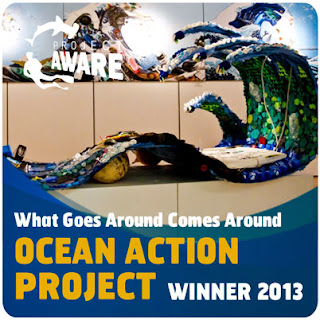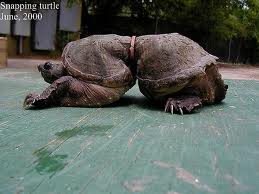 I watched with appreciation as the children looked over the art identifying pieces of plastics hidden in the waves and talking amongst themselves expressing which canvas was their favorite. They especially took to the last two monstrous looking waves. What I like best about presenting with the art show is the ability to engage with the audience instead of lecturing using a PowerPoint. It helps tease out what people do and don't know about plastics.
I watched with appreciation as the children looked over the art identifying pieces of plastics hidden in the waves and talking amongst themselves expressing which canvas was their favorite. They especially took to the last two monstrous looking waves. What I like best about presenting with the art show is the ability to engage with the audience instead of lecturing using a PowerPoint. It helps tease out what people do and don't know about plastics. My big take home was during a game I shared with them using one time use plastics. The game was "Which Item is a Better Choice? (if you HAVE to use single use items)" For the most part the students got it, but I did stump them a few times like when I held up in tandum a plastic soda bottle and a Styrofoam cup. They shouted, "the Styrofoam cup would be better" and when I asked why, they replied, "Because Styrofoam isn't plastic." Interesting. It might stand to reason why they would think that. It doesn't feel like any other kind of plastics. What an awesome opportunity to clear that up and explain that out of all the plastics we use, Styrofoam readily leaches chemicals so we really shouldn't eat or drink out of Styrofoam if we want to error on the side of safety. This exercise gave me the opportunity to explain, if you have to choose between the two, take the plastic bottle and make sure it gets into a recycle bin. Styrofoam is not typically recyclable especially here in Wilmington, NC and it isn't sturdy enough for multiple uses.

Lastly, I shared with them a bin of plastic fragments collected off a beach in Hawaii. The fragments are the remnents of plastics that either washed out or got lost at sea that became embrittled due to the sun photo-degrading the plastics and the waves busting them up into pieces. If I had a camera on me, I would have loved to have gotten a shot of all the little hands in the bin of "plastic sand." Like me, they could not resist studying the fragmented plastic pieces as they tried to identify what some of the pieces might have once been. With such enthusiasm, I think this research has a future!













